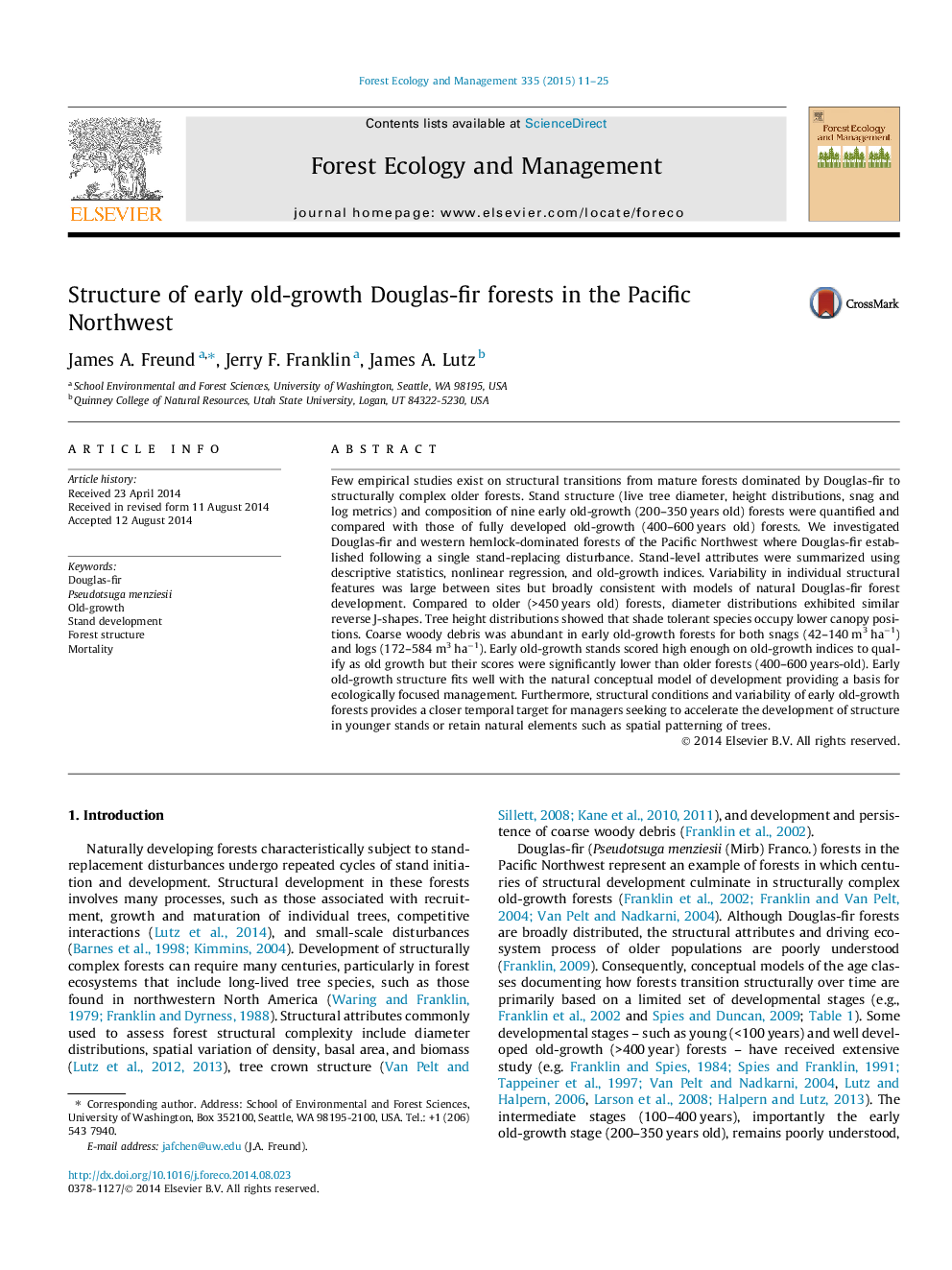| Article ID | Journal | Published Year | Pages | File Type |
|---|---|---|---|---|
| 6542950 | Forest Ecology and Management | 2015 | 15 Pages |
Abstract
Few empirical studies exist on structural transitions from mature forests dominated by Douglas-fir to structurally complex older forests. Stand structure (live tree diameter, height distributions, snag and log metrics) and composition of nine early old-growth (200-350Â years old) forests were quantified and compared with those of fully developed old-growth (400-600Â years old) forests. We investigated Douglas-fir and western hemlock-dominated forests of the Pacific Northwest where Douglas-fir established following a single stand-replacing disturbance. Stand-level attributes were summarized using descriptive statistics, nonlinear regression, and old-growth indices. Variability in individual structural features was large between sites but broadly consistent with models of natural Douglas-fir forest development. Compared to older (>450Â years old) forests, diameter distributions exhibited similar reverse J-shapes. Tree height distributions showed that shade tolerant species occupy lower canopy positions. Coarse woody debris was abundant in early old-growth forests for both snags (42-140Â m3Â haâ1) and logs (172-584Â m3Â haâ1). Early old-growth stands scored high enough on old-growth indices to qualify as old growth but their scores were significantly lower than older forests (400-600Â years-old). Early old-growth structure fits well with the natural conceptual model of development providing a basis for ecologically focused management. Furthermore, structural conditions and variability of early old-growth forests provides a closer temporal target for managers seeking to accelerate the development of structure in younger stands or retain natural elements such as spatial patterning of trees.
Related Topics
Life Sciences
Agricultural and Biological Sciences
Ecology, Evolution, Behavior and Systematics
Authors
James A. Freund, Jerry F. Franklin, James A. Lutz,
